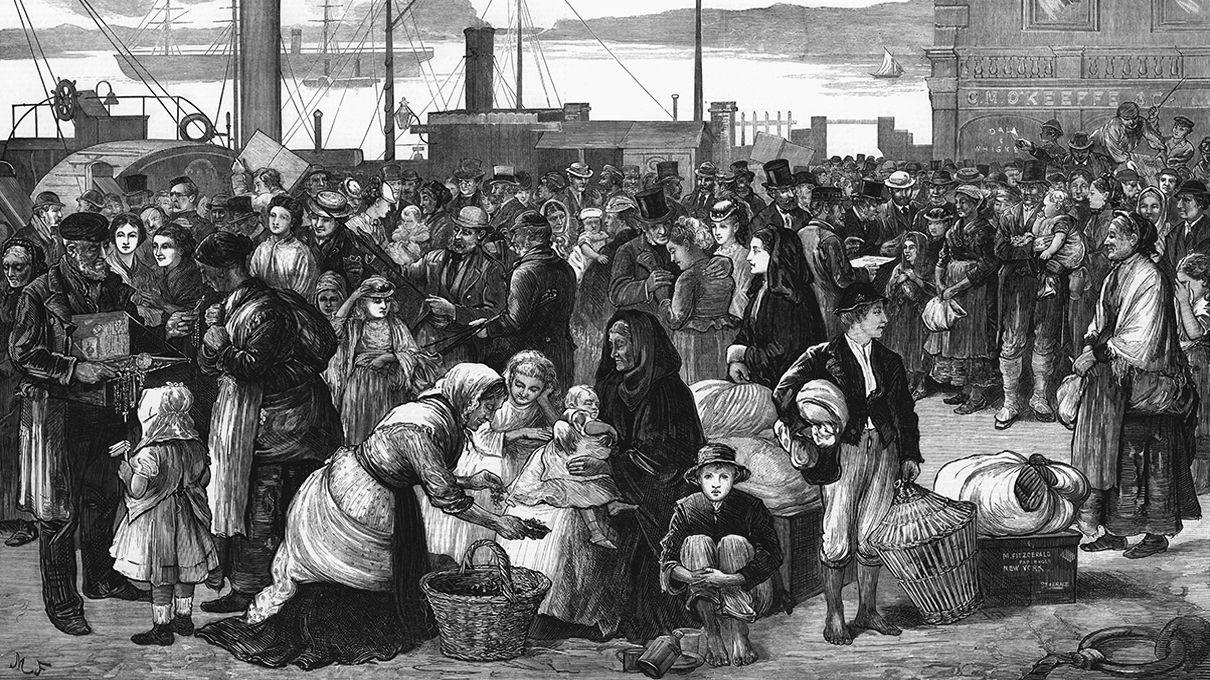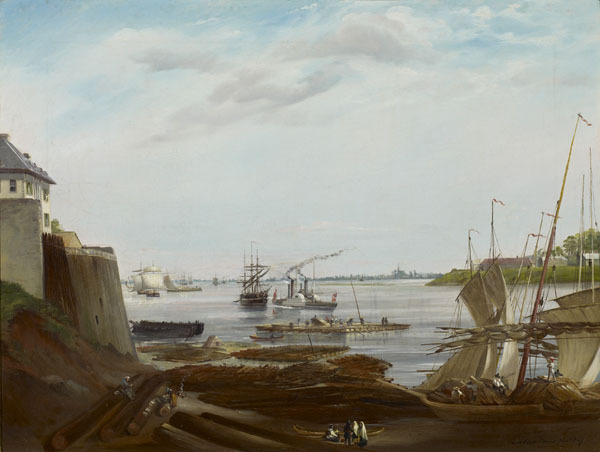The Great Irish Migration and Montreal
At the beginning of the nineteenth century, Ireland “was one of the poorest nations in Europe”, and the Irish increasingly looked towards foreign soil as an opportunity for a better life. Pre-blight Irish Montreal, consisted of two groups: the Irish Catholics and the Irish Protestants. Montreal’s primarily French-speaking Catholics saw the Irish Catholics as the common ally between themselves and the Irish Protestants, and vice-versa.
Thus, during the early years of the nineteenth century, I would argue that it was the Irish Catholics who acted as the ambassadors and liaisons between the different demographics within the City of Montreal.
In the 1830's, these ambassadors would be a critical asset for a decade that "opened with plague and closed with rebellion", seeing mass immigration. Through the aftermath of the rebellion, which saw the royalists of Lower Canada square off against the separatists in a battle which lasted around a year, where eight thousand men were taken prisoners. While some historians, such as John Cooper, suggest that the prosperity of the early 1820’s continued on until the beginning of the 1830’s it's hard to ignore the large numbers of Irish immigrants arriving in Canada during the former decade. And while the massive waves of Irish immigrants did not arrive until the mid 1840s, it's important to note that many of the Irish began seeking new homes within Canada prior to the commencement of “the Great Irish Famine” beginning in 1845. It was with the arrival of ‘Phytophtrora infestans’, also known as ‘dry rot’, that the entire nation of Ireland was flipped on its head. The Great Irish Famine was a time that can be characterized by mass starvation, illness.
The Irish began spreading throughout the known English world (commonwealths, Colonies and Britain). In regards to Canada, immigrants would set off from the major port cities in Ireland (Dublin) or England (Liverpool), towards Canada’s East Coast. As stated by John Gallergher, in his document describing the movement of the Irish in Montreal by 1846, “Montreal [was] but a counterpart of Grossle Isle”. Although the exact numbers vary in regards to specific accounts, in 1847 alone, a hundred thousand Irish arrived on Grosse Isle itself.
Ocean travel, during the nineteenth century, was still a term synonymous with disease and death and again, while the numbers are out there, discrepancies cause some confusion when calculating the number of dead caused by both the Great Irish Starvation itself, as well as its after effects. Overall it is assumed that more than 1.5 million people left Ireland as a result of the starvation or the diseases associated with it, between 1941-1951. But these numbers do not tell the entire story, behind the casualties of the blight. Between 1847 and 1848, out of the 100,000 immigrants to arrive in Canada during this time, six percent died on their passage over. But these numbers do not take into account the thousands who would later die as a result from the terrible conditions surrounding both the ports of Montreal and Grosse Isle. Studies show that 3,579 more Irish died of Typhus once they had made it to Montreal. During the summer of 1847, it is assumed that Montreal had more than eleven thousand sick, within the borders of the city. This spread of disease can be directly correlated to the large number of Irish living together in cramped and unsanitary conditions, after their arrival to the city. By 1850’s, the Irish who had populated the City of Montreal prior to the immigration caused by the mass starvation of 1845, had been thrown into the same demographic as those who had just arrived in the city. That being said, the established Irish community would eventually accept the new Irish, as their own.
As migrants rode down the St. Lawrence valley, Montreal would have seemed like a glimmering light on the horizon.


